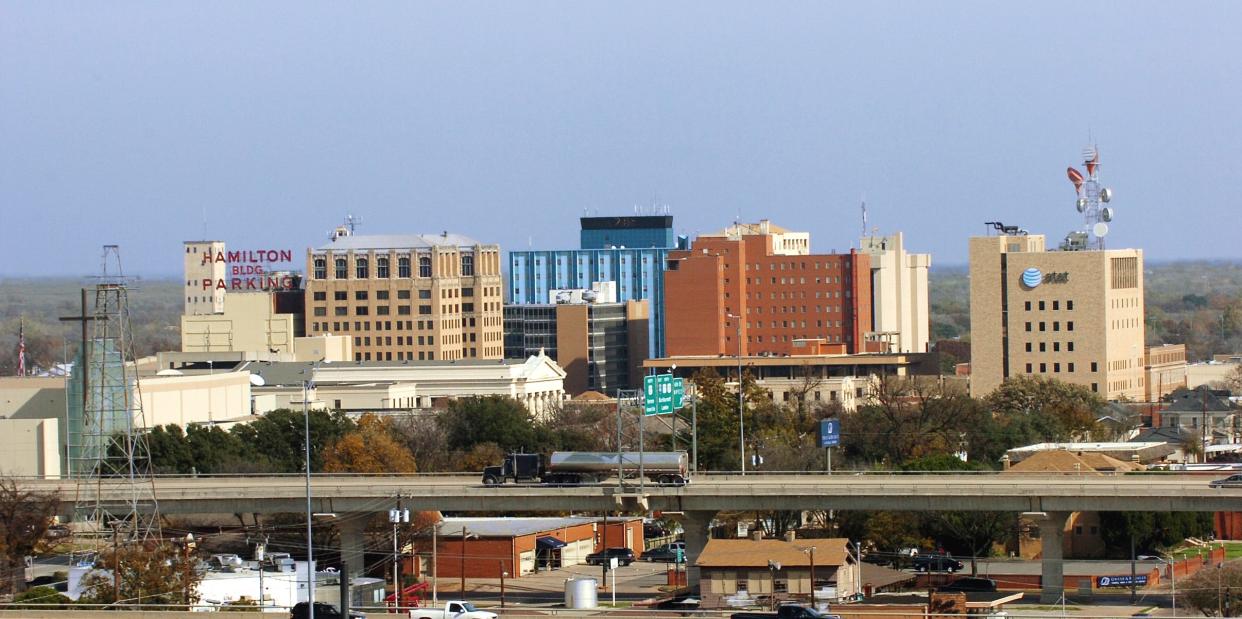Study: Wichita Falls faces challenges moving into future

A new assessment of Wichita Falls’ prospects for the future contains some sobering findings.
“Wichita Falls still faces multiple threats to its near and long-term prospects for success,” according to Broad Ripple Strategies, a company hired by the Chamber of Commerce.
The company’s assessment was based on interviews of residents, focus groups and a non-scientific online survey.
Wichita Falls: 2022 Falls Future 2.0 Community Assessment
It also included data from the U.S. Census Bureau and other statistical sources. It was a follow-up to an assessment done in 2017.
The 3,261 people who participated in the online survey were asked to rate the likelihood they would recommend Wichita Falls to a friend or colleague. The score was negative 26.5.
Among the facts that contributed to the assessment:
Residents have a low per capita income
The per capital income in Wichita Falls is $46,954 compared to the Texas average of $55,129 and the national average of $59,510. Wichita Falls is also lower than comparable cities in the state.
Wichita Falls has a high poverty rate
The poverty rate in Wichita Falls is 15.1 percent compared to the Texas rate of 13.4 percent and the national rate of 11.9 percent. The city is also higher than comparable cities in the state.
Nearly half of WFISD grads not ready for college or work
Texas Education Agency figures show that although the public school district graduates a higher number of students than the state average, the number of those students ready for college or a career fall far below the statewide average -- 60.1 percent compared to 72.9 percent.
Unfriendly relationships between city government and business
Survey respondents who identified themselves as businesspeople gave the city credit for low business costs and the availability of industrial space but criticized it for the lack of friendly relations between city government and the business community. They also criticized the level of airline service.
Trouble attracting and keeping workforce talent
Respondents said they have trouble finding talent for their businesses, especially in senior or management positions. About 90 percent said they have trouble recruiting top talent to move to Wichita Falls. Employers also worry that retirements pose a near-term threat, especially in certain critical occupations.
The city’s economic base lacks diversity
Nearly one-third of local workers have government jobs. Health care accounts for more than one in five jobs. These are jobs that cater to the local population. Wichita Falls has low employment in manufacturing, wholesale trade and other businesses that bring new wealth into the community.
Wichita Falls’ population diversity gets a low ranking
Only 39 percent of respondents thought Wichita Falls seeks to include a diversity of its residents in civic, social, political and business networks. About 43 percent of whites think so while only 28 percent of Hispanic respondents and 12 percent of Black respondents agree.
Respondents had low opinions on quality of life
Respondents were given seven categories of quality of life to grade. None were graded in positive numbers, but dining opportunities ranked highest at 38 percent. Among those that ranked poorly were shopping and entertainment opportunities and the city’s appearance.
Various entities have poured much effort into rejuvenating downtown Wichita Falls, but only 25 percent of respondents gave downtown a strong rating. Many believe disagreements among property owners, businesses and others involved in the efforts represents “a threat that must be resolved.”
Bright spots
While much of the assessment exposed problems, it did find some bright spots:
Affordable cost of living
Sense of public safety
New high schools
Lack of traffic congestion
The location of Clayton Homes and Pamlico Air in the city, bringing new jobs
A relatively strong level of new business startups
Identification of Wichita Falls as a bicycle community
The study also praised an improvement in public school enrollment numbers, but the survey was taken before it was learned WFISD has lost 800-900 students.
One factor that cast a pall over the entire assessment was the loss of 3,200 residents in the Wichita Falls Metropolitan Statistical Area in the 2020 Census. This followed years of population stagnation and occurred while the population of Texas surged 16 percent and other Texas cities like Wichita Falls experienced population growth.
The assessment states the city's challenges have been decades in the making and will require time to address but warns one barrier that must be overcome is “a community culture that is frequently resistant to change."
“Many stakeholders expressed frustration with a mentality that impedes progress in a variety of ways, especially when it comes to public-sector investments…” the assessment said.
Chamber President Henry Florsheim said the assessment “lays out who we are and how we got here.” Now the chamber will develop a strategy that will be revealed in June and will begin implementing that strategy with the help of a steering committee of community leaders.
This article originally appeared on Wichita Falls Times Record News: Study: Wichita Falls faces challenges moving into future

